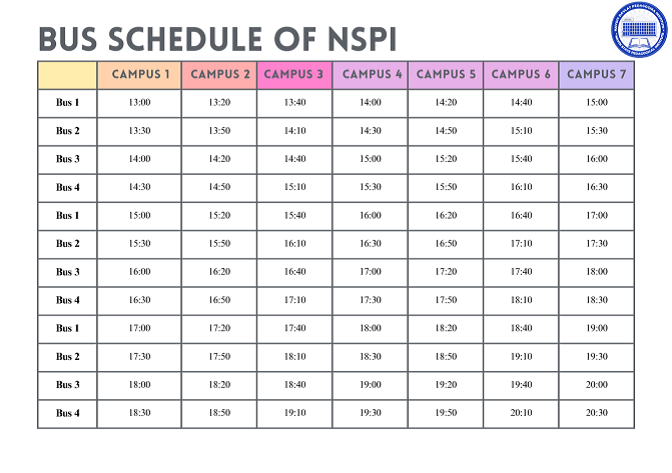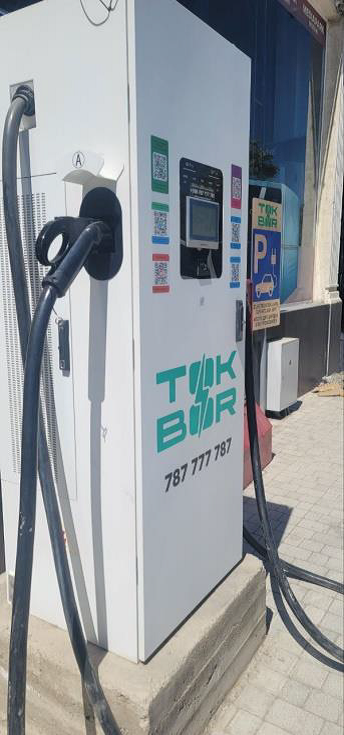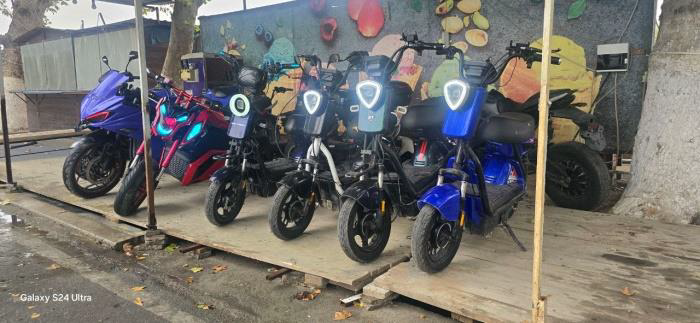
Close

Since cars are the main contributors to air contamination, NSPI tries to do its part by reducing the usage of cars inside the campus by decreasing the space for parking lots and expanding green space. Furthermore, to advocate for the use of electric cars our institute offers charging stations for e-cars. Pedestrian pathways cycling tracks, and other storage spaces for bike and scooter users are the highlight of our plans to reduce carbon emissions. Navoi State Pedagogical Institute prioritizes a good state of the environment and takes measures to promote sustainability throughout our campus. Therefore, carbon footprint is regularly tracked by the institute and we pay attention to taking actions to reduce carbon emissions. For example, there was a bigger parking zone with a capacity of 150 cars in the territory of the institute 4 years ago. Due to the new environmental policy of the institute, the parking area has decreased in size. Currently, only 30 vehicles can be parked at the campus parking zone and a parking fee is charged. Moreover, 70 free bicycles are provided for use by the institute administration.
NSPI shuttle services are essential for enhancing mobility and accessibility for students, faculty, and staff. Our institute buses run on set routes connecting key buildings, dorms, and parking areas. Services have a timetable to help users plan their trips and this timetable, real-time tracking are available on webpages. Shuttles are equipped to accommodate individuals with disabilities. Additionally, shuttle services are funded by the institution, shuttle fares are free for students and staff.
Shuttle services of our institute provides numerous benefits for students, faculty, and staff. Here are some key advantages:










Zero Emission Vehicles (ZEVs) are becoming increasingly available on our institute campuses as part of sustainability initiatives. Our institute has taken several actions to encourage staff and students to use zero emission vehicles. For example, charging stations have been installed to support electric vehicles, making it easier for users to charge their ZEVs while on campus. Moreover, 70 bicycles and 30 e-scooters have been provided by institute with small charge.
Zero Emission Vehicles (ZEVs) on campus offer numerous benefits, enhancing sustainability and the overall campus experience.

Reduce Parking Capacity
NSPI used to have large parking area with the capacity of 80 cars, but according the new environmental regulations of the institute, this parking area has been reduced in size and converted into green spaces, recreational areas, or buildings that serve student needs.

O`zbekiston Respublikasi Davlat madhiyasining matni va musiqasi O`zbekiston Respublikasining 1992 yil 10 dekabrdagi 768-XII-sonli «O`zbekiston Respublikasining Davlat madhiyasi to`g`risida»gi Qonuni bilan tasdiqlangan.
O`zbekiston Respublikаsining Dаvlаt mаdhiyasi O`zbekiston Respublikаsi Dаvlаt suverenitetining rаmzidir.
O`zbekiston Respublikаsining Dаvlаt mаdhiyasigа zo`r ehtirom bilаn qаrаsh O`zbekiston Respublikаsi hаr bir fuqаrosining vаtаnpаrvаrlik burchidir.
Mutal Burhonov musiqasi
Abdulla Oripov so’zi

Serquyosh hur o’lkam, elga baxt, najot,
Sen o’zing do’stlarga yo’ldosh, mehribon!
Yashnagay to abad ilmu fan, ijod,
Shuhrating porlasin toki bor jahon!
Naqarot:
Oltin bu vodiylar – jon O’zbekiston,
Ajdodlar mardona ruhi senga yor!
Ulug’ xalq qudrati jo’sh urgan zamon,
Olamni mahliyo aylagan diyor!
Bag’ri keng o’zbekning o’chmas iymoni,
Erkin, yosh avlodlar senga zo’r qanot!
Istiqlol mash’ali tinchlik posboni,
Xaqsevar, ona yurt, mangu bo’l obod!
Naqarot:
Oltin bu vodiylar – jon O’zbekiston,
Ajdodlar mardona ruhi senga yor!
Ulug’ xalq qudrati jo’sh urgan zamon,
Olamni mahliyo aylagan diyor!

Davlat bayrog`i O`zbekiston Respublikasining 1991 yil 18 noyabrdagi 407-XII-sonli «O`zbekiston Respublikasining Davlat bayrog`i to`g`risida»gi Qonuni bilan tasdiqlangan.
O`zbekiston Respublikаsining Dаvlаt bаyrog`i O`zbekiston Respublikаsi dаvlаt suverenitetining rаmzidir.
O`zbekiston Respublikаsining Dаvlаt bаyrog`i xаlqаro munosаbаtlаrdа O`zbekiston Respublikаsining timsoli bo`lаdi.
O`zbekiston Respublikаsining Dаvlаt bаyrog`i — bаyroqning butun uzunligi bo`ylаb o`tgаn to`q moviy rаng, oq rаng vа to`q yashil rаngli uchtа endаn tаrkib topgаn to`g`ri to`rtburchаk shаklidаgi mаtodir.

Davlat gerbi O`zbekiston Respublikasining 1992 yil 2 iyuldagi 616-XII-sonli «O`zbekiston Respublikasi Davlat gerbi to`g`risida»gi Qonuni bilan tasdiqlangan.
O`zbekiston Respublikаsi Dаvlаt gerbi quyidаgi ko`rinishgа egа: tog`lаr, dаryolаr vа so`l tomoni bug`doy boshoqlаridаn, o`ng tomoni esа chаnoqlаri ochilgаn g`o`zа shoxlаridаn iborаt chаmbаrgа o`rаlgаn gullаgаn vodiy uzrа quyosh zаrrin nurlаrini sochib turаdi. Gerbning yuqori qismidа Respublikа hurligining rаmzi sifаtidа sаkkizburchаk tаsvirlаngаn bo`lib, uning ichki qismidа yarim oy vа yulduz tаsvirlаngаn. Gerbning mаrkаzidа bаxt vа erksevаrlik rаmzi — qаnotlаrini yozgаn Humo qushi tаsvirlаngаn. Gerbning pаstki qismidа O`zbekiston Respublikаsi Dаvlаt bаyrog`ini ifodа etuvchi chаmbаr lentаsining bаntidа «O’zbekiston» deb yozib qo`yilgаn.
O`zbekiston Respublikаsi Dаvlаt gerbining rаngli ko`rinishidа: Humo qushi vа dаryolаr — kumush rаngidа; quyosh, boshoqlаr, pаxtа chаnoqlаri vа «O’zbekiston» yozuvi — oltin rаngidа; g`o`zа shoxlаri vа bаrglаri, tog`lаr vа vodiy — yashil rаngdа; chаnoqlаrdаgi pаxtа — oq rаngdа; lentа — O`zbekiston Respublikаsi Dаvlаt bаyrog`ining rаnglаrini аks ettiruvchi uch xil rаngdа; sаkkizburchаk — oltin zаrhаl bilаn hoshiyalаngаn holdа hаvo rаngdа; yarim oy vа yulduzlаr — oq rаngidа tаsvirlаngаn.